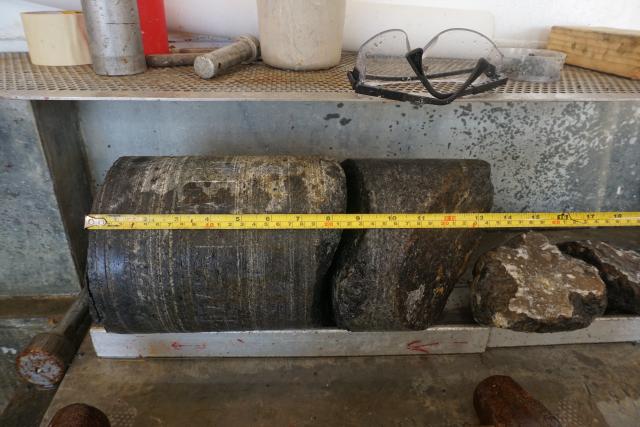Why Are These Scientists Drilling Through the Ocean Floor?
A research team hopes they’ll find a biosphere beneath the earth’s crust.
This article is based on a Science Friday interview and was originally published on PRI.org.
Deep in the Indian Ocean, far off the southeast coast of South Africa, there is a drill digging its way into the ocean floor of the underwater Atlantis Bank.
A team of scientists aboard the research vessel JOIDES Resolution has been operating the drill since December, and they’re hoping to eventually break through the earth’s crust and bore down into the mantle.
“We’re about a half mile down and drilling ahead,” says geologist Henry Dick, co-chief scientist of the expedition.
Dick and his colleagues are hoping to collect samples of the crust and eventually of the mantle, opening the door to a huge lack of scientific knowledge about what actually lies beneath the earth’s crust.

“The ocean crust comprises three-fifths of the earth’s crust,” Dick says. “And yet in all that crust most of it is lower crust and we only have two holes into it—one in the Atlantic and one into the Indian Ocean—that are of any significance at all. And we haven’t drilled more than about a third of the way through it. And, you know, when you’re talking about the composition of three-fifths of the earth’s crust, that’s kind of a big gap in our learning.”
They’re also hoping to figure out whether there’s anything alive buried deep in the high-pressure environment under the earth’s crust.
“We’ve got a couple of bio geochemists on board who are busy assessing the rocks for microbes and fungi and other things and they do find a few,” Dick says, “But the hope is, the thought is, that if we have a lot of altered metal rock down there that creates hydrogen gas which in turn reacts with sea water to form methane—and bugs can live off of methane—we’re thinking that there may be a hidden planetary biosphere beneath the earth’s crust out in the oceans.”
The expedition is also challenging long-held textbook ideas about what exactly the earth’s crust and mantel may look like.
“Since we’ve been working here in the Indian Ocean now for the last 15 years, we’ve discovered that large parts of the sea floor have no crust,” Dick says, “The mantel’s directly exposed to the sea floor.”
The scientists hope to continue drilling for another 100 meters during their current expedition. In another two to five years, they want to come back and drill another mile deeper.
Elizabeth Shockman is a freelance journalist who lives in the Twin Cities. Previously she worked as a PRI staff member and freelancer, reporting primarily from Moscow and around Russia.